Review
As we prepare to bid a fond farewell to our long-term test truck, the D-Max has proved a real star among out little fleet.
During its nine-month stay at Fleet Towers, the D-Max has well and truly exceeded our expectations in just about every area of operation and leaves us with a clean bill of health and a total expenditure of 30 litres if AdBlue that it’s managed to gobble up.
Make no mistake – we have pushed this truck hard. We’ve driven thousands of miles of fast motorway trips, braved the switchback lanes of Dartmoor in thick snow and we’ve piled it up with white goods, furniture and other assorted detritus. And never once has there been a suggestion that the D-Max might not cope.
The DL20 is a mid-range variant but nevertheless, it’s loaded up with goodies you wouldn’t expect, such as heated seats for example, and as for safety gadgets, it almost drips with them. In fact, the bleeps and visual warnings that abound on an average journey have almost seemed overkill at times, if that’s possible.
The D-Max is a real Jekyll and Hyde vehicle. It’s smooth as silk on the motorways, but get in the rough and it soon bares its teeth, the 2.0-litre turbodiesel powerplant taking on a kind of meaty growl as the four-wheel drive gubbins clunks into place. With 160bhp on tap, I can’t see this truck ever getting stuck in anything the UK can throw at it.
The few niggles we’ve had along the way are so minor that they aren’t worth repeating here. The only real problem we’ve had is that the truck doesn’t have a cover over the cargo area. On a couple of occasions, when it’s raining for example, we had to cram all our gear in the back seats, which meant we could not carry any passengers.
As cargo covers are pretty pricey, putting it mildly, any fleet manager buying this vehicle will have to ascertain exactly what it’s going to be used for at work – and act accordingly when choosing from the options list.
Always proving useful
One of the fence panels in my garden self-destructed the other day and when I enquired about getting a new one delivered, the firm in question wanted £25 to do so, despite the fact that their depot was not far from my house.
As the panel itself only cost £22, I decided to drive there in our trusty D-Max and see if I could load it up myself and save the delivery dosh. The picture here shows that I was successful in this by using a single ratchet tie, but it must be mentioned that not one of the staff members in the yard lifted a finger to help me. Thanks lads!
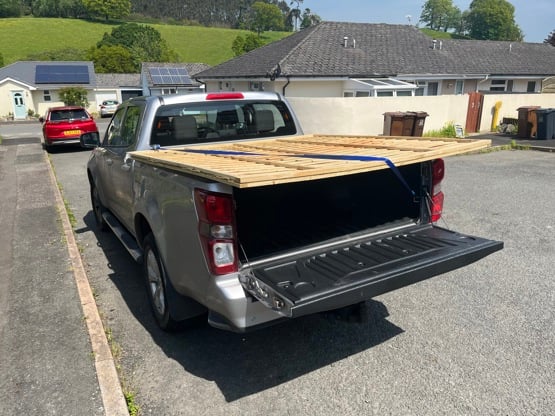
This little scenario once again proves how useful this truck can be, although I would not have undertaken this task if the yard had not been close by. Even tied down, the panel shifted slightly during the short trip and I had to stop and adjust it.
Meanwhile, on the ‘grunt front’ I got to test the true pulling power of this truck a couple of weeks ago when I rather stupidly parked on a boggy grassed area while visiting a friend at her holiday caravan on the Essex coast.
After a hefty downpour during the night, I realised next morning that the D-Max was going nowhere in two-wheel drive mode, so I flicked the switch on the dash to the 4wd high position. There was certainly plenty of noise and a good load of mud flying in every direction, but no movement forwards at all. Once I had engaged 4wd low mode, the D-Max suddenly turned into a very different animal, baring its teeth and laughing at what it considered to be a trifling little bit of stickiness!
I was away in a jiffy – and I legged it off PDQ as what had the day before been a nice neat grassed area on the holiday park had now become a small mud bath full of deep ruts and gouges! Ooops.
Handy features discovered
The journey between my home in Devon and my holiday abode on the Essex coast takes a minimum of six hours – and that’s a long time for my partner and I to be cooped up together in our D-Max.
I’m usually pretty happy, as driving this truck on the roads is a sheer delight. Despite its chunky appearance, the D-Max rides as smoothly as silk and I have yet to experience a single back twinge during this 350-mile sojourn.
But the Mem Sahib tends to get a trifle restless so I always make sure that when I pack our lunch for the trip, I include a small amount of vodka and Coke in the hope that it might keep her quiet and she will doze off for a while, leaving me in peace.
During such a trip the other day, she was obviously becoming bored with my scintillating chat about various aspects of the van world, so she started poking about in the cab trying to find what mischief she could get up to, when she suddenly discovered a hidden cup holder on her side of the dash. I was surprised as I thought I knew this truck inside out, having driven it every day for the past four months. I was even more surprised to find there was another cup holder on my side too. Further investigation by my partner also revealed a USB-B port hidden under a flap at the bottom of the dashboard which I hadn’t seen before. I wonder if there are any other handy features that have not been discovered yet?
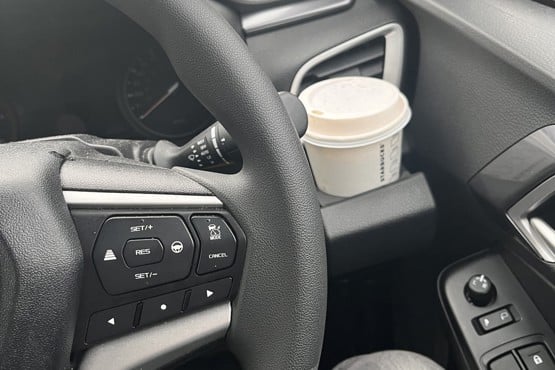
Admittedly, these revelations aren’t exactly going to shake the foundations of the commercial vehicle industry, but it does go to show how much thought has been put into this vehicle by Isuzu to ensure that its occupants have everything they need. There’s even a handy sunglasses holder in the space above the cab near the interior reading lights. The heated seats, meanwhile, have been a real boon as the Mem Sahib suffers from back pains occasionally and finds the warmth helps to soothe away the aches.
Meanwhile, a rather amusing incident occurred the other day. My Devon house is on the side of a valley so the truck is always parked outside facing downhill and after a heavy night’s rainfall recently, one of my neighbours knocked on my door with a worried expression on her face, asking if I realised the rear end of the D-Max had turned into a swimming pool, as can be seen in the picture here.
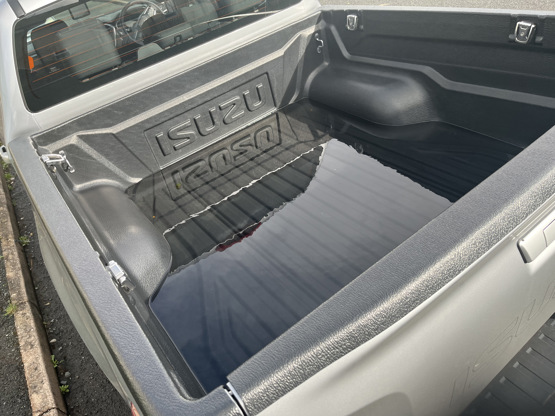
I told her that such an occurrence was par for the course with a truck like this and that the plastic load liner meant the metal on the truck would not be prone to rusting. I then pointed out the narrow gap under the tailgate which would allow the water to gush out once I took off. I have to make sure none of my neighbours are standing anywhere near the D-Max when this happens as they would be liberally showered with rainwater.
Having already started World War Three in my little Devon close last year by parking my 30-foot long motor home nearby, I don’t want to ratchet the tensions up any further!
Winter weather testing
Living just five miles south of Dartmoor, as I do, I had been looking forward all winter to a good fall of snow, so I could really test the capabilities of our D-Max long termer.
When it snows up on Dartmoor it REALLY snows, and only a fool would attempt to cross its barren wastes with a normal car.
As luck, or otherwise, would have it, there was not a fleck of the white stuff to be seen all winter, until the Wednesday before Easter, when it dumped a load on us overnight. With a joyous whoop, I donned my heavy weather gear straight after breakfast and was off to hit the wildest, twistiest little back tracks that criss-cross our biggest wasteland.
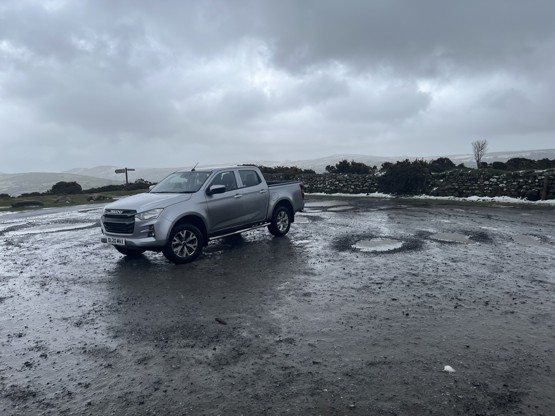
If our D-Max is Dr Jekyll on the A-roads and motorways, Mr Hyde pretty soon showed his face as I climbed one of the steep little switchback lanes north of Ashburton. The 2.0-litre diesel powerplant, offering 160bhp, took on an extra meaty growly, the suspension seemed to stiffen up and a grin spread across my face as we skittered up one particularly treacherous 25% hairpin.
I quickly flicked the truck into four-wheel drive high mode for the rest of the hairy bits and the D-Max came through with flying colours, never once leaving me in any doubt about whether or not we would get through in one piece. I reckon the D-Max could even have handled the rough bits in 2wd mode.
As can be seen from the photo taken at the highest point on Dartmoor, the poor old D-Max came home a filthy mess and having crossed swords with a few farm vehicles coming the other way, we suffered a few marks on the nearside where bushes at the side of the road scraped the paintwork. Hopefully a dab of T-Cut will sort this out.
And you know what? I swear that if our D-Max could talk, it would have said to me when we got home: “Is that the best you can throw at me then? Come on, I can take much more punishment than that in my stride!”
Loadspace and practicality
We’ve eulogised at length about the merits of our long-term Isuzu D-Max test vehicle but have yet to turn our attention to the rear cargo area which, of course, will be an important point for fleet managers to bear in mind when considering laying out their company’s cash.
Our DL20 Double Cab model has a load bed length of 1,495mm and a width of 1,530mm. The depth of the load bed is 490mm. It's the smallest of the three models available, with a Single Cab and Extended Cab also available. The maximum payload weight is 1,090Kg.
As with just about all vehicles in this sector, the D-Max comes without a lid, which has both benefits and drawbacks. On the plus side, our truck is not restricted in the height of items it can transport. On the minus side, cargo will be exposed both to the rain and to the eyes of any thieves who happen to be passing. Also, leaving the vehicle out in the open overnight can result in a small swimming pool appearing in the cargo area in the event of a rainstorm.
Cargo lids can be pretty pricey, so if they aren’t needed, there’s no point buying them. But fleet managers considering investing in such a truck will have to give some careful consideration as to what it will be used for. For my particular needs, the open end has mainly been a hindrance rather than a help, it must be said.
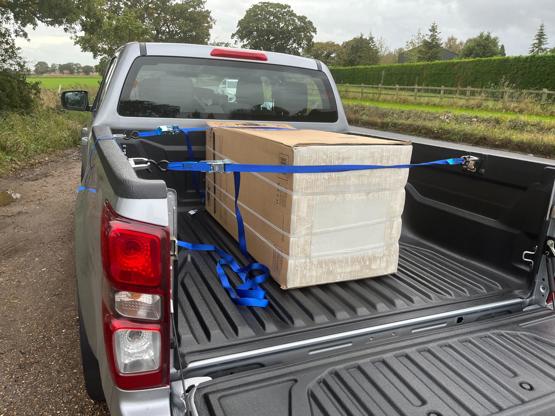
Of course, with an open top like ours, ratchet ties are a must to avoid any items of cargo flying out and hitting some unfortunate passer-by. As luck (or otherwise) would have it, the small fridge freezer at my holiday home decided to give up the ghost a couple of weeks after our D-Max arrived, so to avoid having all my precious frozen goods ruined, I legged it off pretty smartish to Halfords for two ratchet ties, then round to Currys for the new white goods.
The rear tailgate on our truck is so heavy and chunky that it feels as though it would carry the weight of a rhinoceros, but it opens easily and smoothly as, unlike with most other vehicles in the sector, it features a hydraulic damper on one side, so it doesn’t come down with a mighty crash. A nice little added extra in my book.
Meanwhile, there are plenty of chunky hook ties all round and, as can be seen from the photos, my new fridge freezer was soon strapped in securely.
Afterwards, I recruited my neighbour Tracey to try loading a few heavy items, just to prove that a female of diminutive stature will have no problems with this truck. Vehicles like this are not just for macho men nowadays and as can be seen, our willing model handled her tasks with ease and aplomb.
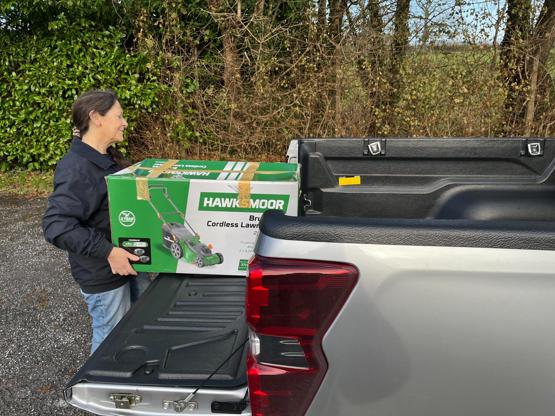
Dirty or clean, our D-Max is an absolute star
Any busy van or truck driver will know only too well how quickly a vehicle can get in a mess both inside and out at this time of year. Filthy roads and all the detritus they need, such as drinks, tissues, work papers etc, plus a heavy workload mean there isn’t always time for a good clean-up.
So as a freelance journalist who works virtually 24/7 – plus being head of an extended family which expects me to fulfil their various transport and haulage needs at the drop of a hat – I make no excuse for publishing these pictures taken this morning, which see our Isuzu D-Max looking very much in need of a damned good wash and brush-up!
This will be done soon, as I just happen to have a neighbour who is a mobile vehicle valeter and I’ll be employing his services.
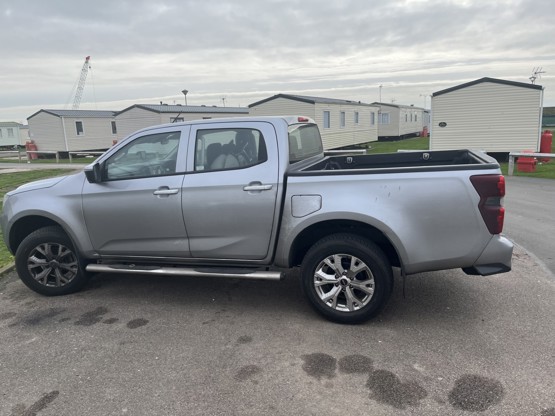
While the temporary state of my personal vehicle doesn’t matter too much in the great game of business life, any canny van fleet manager will know how important it can be keeping their vehicles spick and span. A van turning up at a new client’s premises for the first time will speak volumes about the company whose logo is emblazed on its side.
A grubby old truck with ‘Wish my wife was dirty as this!’ or ‘Cleaned by Stevie Wonder’ scrawled in the dirt on the back could well see that lucrative new contract mysteriously cancelled all of a sudden.
But dirty or clean, our D-Max is proving an absolute star, ploughing through dirt, mud and the odd fall of snow as if I was tootling along on a summer’s day. I have once had occasion to flick the truck into all-wheel drive mode when I got stuck in the mud at my holiday home in Essex recently and just last week, the emergency braking system saved me from slamming into a car which had suddenly pulled out in front of me from a side turning.
But not once have I felt unsafe or vulnerable being aboard this chunky contender. It seems to have been built to the standards of a Sherman tank!
Meanwhile on the maintenance front, with just under 7,000 miles on the clock now, my truck is demanding an AdBlue fill-up again, having already swallowed 10 litres of the stuff at 4,000 miles. That’s a total of £30 spent altogether. It’s rather annoying as older diesel trucks don’t use AdBlue but I suppose it could be argued that it’s a small price for me to pay to help clean up our precious planet.
An "ice" surprise
Having piled almost 4,000 miles on the clock of our Isuzu D-Max since it arrived at Fleet Towers, the truck informed me the other day that it needed filling up with AdBlue.
My experience is that AdBlue consumption varies tremendously among differing vehicles. My personal transport, a Ford Transit Custom, seems to drink the stuff like there’s no tomorrow, whereas my son’s BMW 5-series diesel hardly ever needs topping up. So as our truck has just gobbled down 10 litres of the stuff without overflowing, it looks as though it falls into the first category.
Meanwhile, a rather curious incident occurred recently which brought home to me the importance of the daily walk-round check, even for a smallish commercial vehicle such as this. Having set off on a cold frosty morning, I was alerted to some noises emanating from the rear of the truck. As far as I knew it was empty. Imagine my alarm when I looked in the rear view mirror to see a number of smallish objects flying out of the cargo area in various directions. I wondered if some miscreant had lobbed a load of rubbish into the back of my truck overnight when it was parked, as sometimes happens with these vehicles.
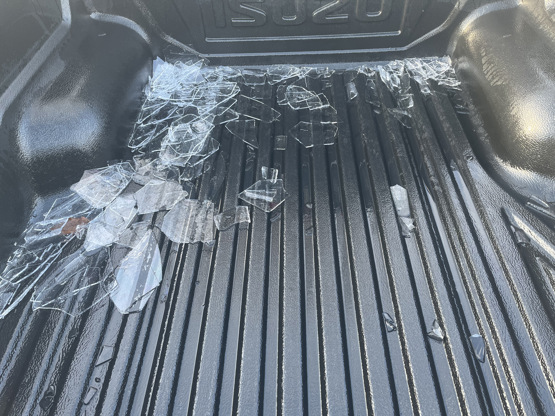
Luckily there was no other traffic about and I pulled over pretty damn quick to investigate and the problem soon became clear. It had rained in the night and had partly filled the cargo area, then frozen afterwards. As I had driven off, the sun shining down had partly defrosted this ice block and flung bits of it hither and thither.
I soon scraped it all out and drove off safely again but this incident brought home to me the importance of the daily walk-round check, which as we know many drivers omit. I will certainly be taking more care in the future as an injury could have occurred here if I had happened to be passing any pedestrians. A sobering thought indeed.
Diesel still "rules the roost"
The pages of FleetNews.co.uk are full of articles about the continuing emergence of electric vehicles at present. But for fleets that want robust 4x4 off-roaders from the mainstream manufacturers, diesel power still rules the roost.
We recently broke the news that Toyota is preparing an electric Hilux powered by a hydrogen fuel cell, but that model is some years away, as is the proposed Ranger plug-in hybrid that Ford says will be ready in 2025.
So bearing that fact in mind, it seems that more and more canny fleet managers are recognising the merits of the Isuzu D-Max, as from the latest SMMT figures, D-Max sales are up this year by an astonishing 33.95%.
I’ve been piling on the miles in our truck of late with several journeys of over 300 miles between my home in Devon and a holiday abode on the Essex coast. Some previous 4x4 trucks I’ve tested have left me with back twinges on long trips but so far I’ve been twinge-free with the D-Max. Either Isuzu’s seat designers possess some fiendish knowledge unknown to the opposition or my back has magically improved itself. Maybe it’s a bit of both!
So far, the truck’s on-road manners have impressed me greatly. The D-Max gives off a low growl which suggests muscular power without being too intrusive while the 160bhp powerplant is lusty and quite sufficient for the cut and thrust of busy roads.
The six-speed auto box flicks up and down seamlessly, giving a relaxing drive. Nudging the gearstick to the right allows the driver to change gear manually, but why anyone would bother doing that beats me.
I’ve been testing commercial vehicles for Fleet News for over 30 years now and, remembering the days when even a radio was an optional extra, I still marvel at all the kit that comes as standard nowadays.
Despite being only a mid-range variant, our D-Max is loaded down to the gills with just about every safety device imaginable. It’s such a smooth drive that it’s easy to accidentally start nudging up above the speed limit, so I particularly like the way the truck gently reminds me if I start breaking the law. It flashes up the correct limit and gives a few little polite dings to warn me to slow down.
But I seem to be constantly given other warnings, both audio and visual, that I really don’t need. I can’t complain and younger drivers will no doubt appreciate all this stuff but for an old groaner like me, it sometimes seems a bit nanny-state-ish.
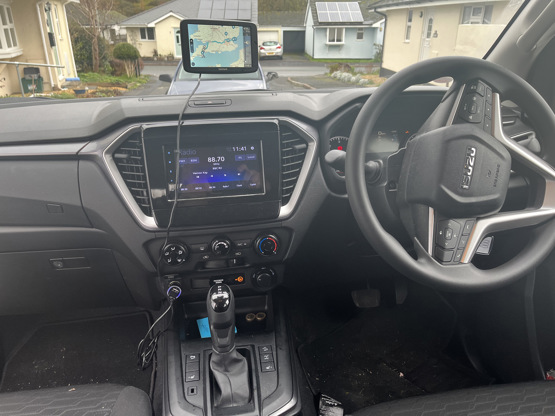
My only other moan, and admittedly it’s a small one, is that there is no 12-volt take-off point on top of the dash, which means that when I stick my TomTom sat-nav unit on the windscreen, the wire trails across the control screen down to the plug hole.
The Mem Sahib did complain that there was no vanity mirror on the rear side of the passenger sun visor, but I pointed out to her that the type of people using this particular vehicle day to day for their work are highly unlikely to bother about what their hair looks like, so that little gripe was given short shrift!
Isuzu D-Max joins our fleet
Something big is happening in the 4x4 truck market at present. The Isuzu D-Max, for many years considered a worthy yet small time player against the likes of the Ford Ranger, Nissan Navara et al, has suddenly blossomed into a major force in the sector.
The D-Max has long been recognised among canny fleet buyers as a rock-solid product at a bargain basement price, much the same as Kia and Hyundai cars are generally viewed.
Slowly, importer Isuzu UK has been building up a loyal following among fleets that require capable off-roaders that won’t break the bank. And now, with Mitsubishi exiting the UK market, leaving a huge gap for companies that used to buy the L200, Isuzu has grasped the obvious sales opportunity with both hands and pounced.
In addition to the workaday models it was always known for, the manufacturer has been busy launching more upmarket lifestyle variants – and the ploy appears to be working as, so far this year, sales are up a massive 36.57 per cent. The D-Max has also been hoovering up plenty of industry awards along the way.
The latest model, for example, the Artic Trucks AT35, simply out-blings all the opposition by a good few miles, with its outrageous macho looks and massive knobbly tyres.
However, as few fleets are likely to opt for this bobby dazzler, we chose the more fleet-friendly DL20 double-cab auto for our latest long-term test vehicle. During its six-month stay at Fleet Towers, we will be testing the D-Max in a variety of situations that it is likely to face during an average fleet life.
Weighing in at £31,179 ex-VAT, our test vehicle looks at stylish and macho as any of the opposition, clad in shiny silver paintwork and sporting smart 18-in alloys. The lads in the Isuzu press office even managed to secure for our D-Max DL20 the number plate DL20 MAX.
This truck has a lot more standard kit than I’d been expecting and we’ll be looking at this in future updates.
As luck would have it, I happen to live just five miles from Dartmoor, so when the bad weather sets in up there, as it always does in winter, I’ll be plugging across those barren wastes to test the D-Max’s off-road capability.
I also own a small property in Essex, so the truck will be clicking up plenty of motorway miles too. More details next month.
Specs
| Manufacturer | Isuzu |
| Model | D-Max Diesel |
| Specification | Isuzu D-Max Diesel 1.9 DL20 Double Cab 4x4 |
| Model Year | 2025.00 |
| Annual VED (Road tax) | £1035 |
| BIK List Price | £31,505 |
| CO2 | 220g/km |
| Insurance Group | N/A |
| CC | 1,898 |
| Fuel Type | |
| Vehicle Type | Pick-up |
| Luggage capacity (Seats up) | N/A |
Running Costs
| P11D | £31,505 |
| Cost per mile | 52.49ppm |
| Residual value | £14,175 |
| Insurance group | N/A |
| Fuel Type | |
| Cost per mile | 52.49ppm |
| Fuel | 17.81ppm |
| Depreciation | 28.98ppm |
| Service maintenance and repair | 5.70ppm |
Rivals
Info at a glance
-
P11D Price
£31,505
-
MPG
33.6 -
CO2 Emissions
220g/km -
Payload
N/A -
Load Volume
N/A -
Load Width
N/A -
Load Length
5,265mm



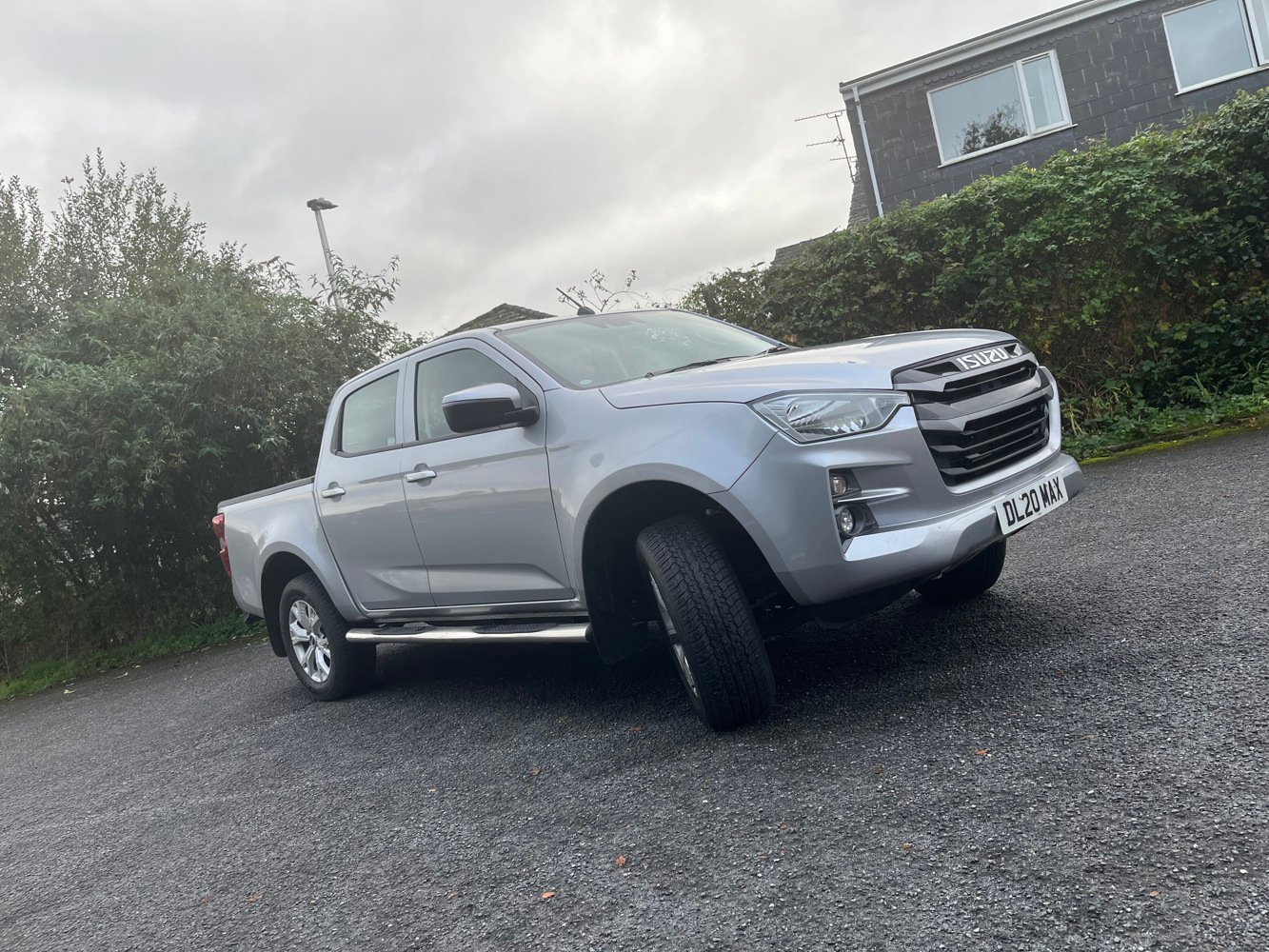
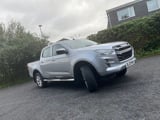

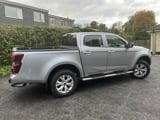


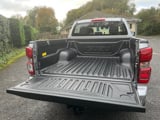
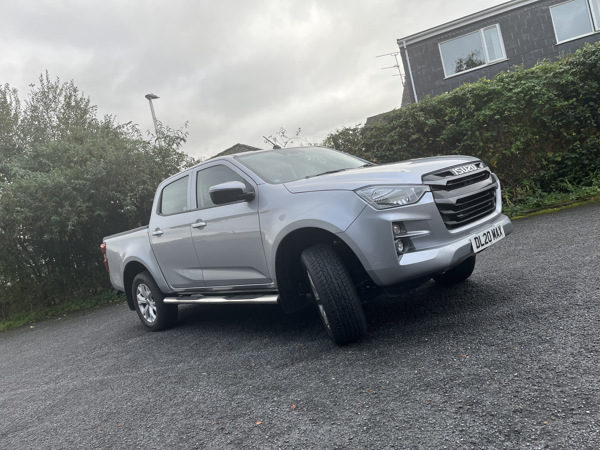
 Diesel
Diesel












